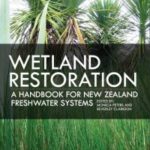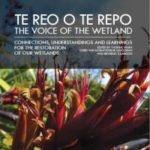Brown Teal Habitat

Originally birds of a variety of forest and wetland habitats, pāteke now occur mainly on lowland floodplains typically where there are combinations of pastoral land, forest remnants, wetlands, and estuaries.
Pāteke can adapt very well to the New Zealand rural landscape. A self-sustaining pāteke population requires a large area (usually several hundred hectares) and this may span several properties.
The critical requirements:
• Foraging habitat is diverse, including all or most of the following habitats: – areas of low-lying fertile floodplains with many permanent and ephemeral wetlands – seasonally damp, grazed, fertile pasture (rank grass is impenetrable and provides less food) – ability to retain moisture levels in dry periods – floodplain forest, e.g. stands of podocarps and other tree and shrub species (Coprosma etc) along valley floors, all providing fruit for pāteke – proximity to estuaries
• Suitable nesting and roosting cover (e.g. riparian areas of sedges, rushes and other dense ground vegetation) near the open water, wetland brood-rearing areas, and wetland feeding areas
• Potential flocking sites at permanent, undisturbed, water bodies containing marginal cover and safe resting areas
Pāteke do most of their feeding at night in permanent seeps, swamps, damp pasture and the shallows of drains, streams, ponds and estuaries.
They are omnivorous, consuming a variety of grasses, seeds, insects, molluscs, worms and many other invertebrates.
Invertebrate could cover:
(a) All aquatic insects – water boatmen, bugs, back swimmers, etc
(b) Insects that spend their larval stages in water – stoneflies, mosquitoes, black flies, gnats, midges, caddis flies, mayflies, alderflies, dragonflies, damsel flies and lacewings
(c) Insects which spend no time in water, but use wetlands extensively – moths, bees, wasps, beetles, ants and butterflies
(d) Crustaceans – fairy shrimps, clam shrimps, water fleas, seed shrimps and Cyclops
Wetland Vegetation
The other critical part of the Brown Teal food chain appears to be seed-bearing plants and wetland vegetation.
Historically the seed-bearing plants would have included seeds from most of New Zealand’s native trees – kahikatea, tawa, titoki, etc., and the suitable wetland plants – raupo, rushes, sedges and grasses of all types, ferns, flowering plants and flaxes of all types.
Grazing of Agricultural Livestock
To protect vegetation from the negative influences of livestock sites must be fenced, but at the same time teal must have easy access to the surrounding farmland so that they can graze in the paddocks and dissect the cow dung, as they do in Northland and Great Barrier Island.
Habitat loss and degradation
The most chronic habitat loss has been the loss of lowland wetlands, e.g. swamps, slow-flowing streams and kahikatea forests, and their conversion to agricultural land and other development. Surviving wetlands have often been modified by the following:
• Excavation of deep, steepsided channels and the loss of backwashes and seepage areas causing the chronic drying out of lowlands in summer months and during droughts.
• The loss of riparian vegetation along margins of wetlands, ponds and streams which provide important areas in which to hide and nest.
• In poorly managed areas, kikuyu and other exotic grasses have proliferated, resulting in dense impenetrable swards of vegetation.
• The presence of rodents results in increased competition with pāteke for seeds, invertebrates and other foods.
Great Resources:
WETLAND RESTORATION. A HANDBOOK FOR NEW ZEALAND FRESHWATER SYSTEMS
Wetland Restoration: A Handbook for New Zealand Freshwater Systems brings together expertise from specialists and groups actively engaged in restoring wetlands throughout the country.
The handbook builds on regionally based restoration guides and provides a detailed, comprehensive ecosystem approach toward understanding, protecting and enhancing our remaining wetlands. It is targeted at those who plan to, and those who already are making a difference to improving wetlands, and is written in a way that can easily be understood and importantly, acted on.
TE REO O TE REPO: THE VOICE OF THE WETLAND
Wetland health & Cultural wetland values
The handbook highlights a range of mahi (work) undertaken by iwi (tribes) and hapū (sub-tribes) to increase the health and wellbeing of their repo (wetlands). Information shared includes processes for facilitating renewed and vibrant connections between whānau (families) and their resources, understanding our cultural resources, and learning from case studies on wetland restoration, cultural indicators, and monitoring, all led by or in collaboration with tangata whenua (indigenous people).
The articles are written by Māori researchers as well as scientists who work with iwi and hapū partners. The handbook aims to provide best practice techniques for the enhancement and protection of cultural wetland values to share with tangata whenua throughout the motu (country). It will also assist local authorities, research providers, and community groups in their understanding of cultural priorities for wetland restoration.



